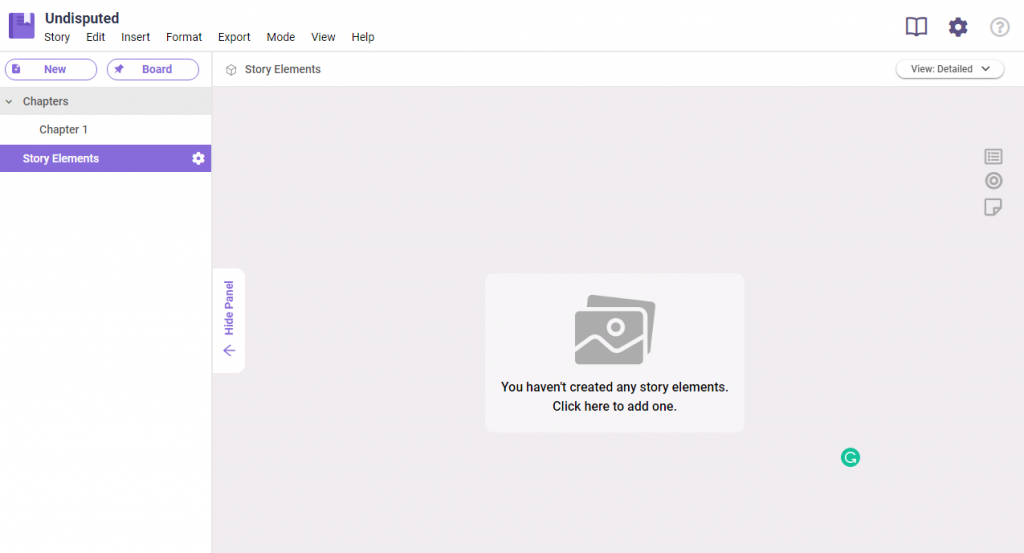What is a Flat Character

You might have heard that having a flat character is bad, and you might hear a disheartening comment from an editor or reviewer that you have a flat character. Just knowing that your character is a flat cardboard cut-out is a stake to the heart to a budding author.
However, the truth of the matter is that having a flat character is not inherently bad. Sure, you might know flat characters to be often uninteresting and boring, but there are many flat characters in literature that are actually exciting and beloved!
The key concept here is to know how to identify flat characters, and if their flatness contributes to the narrative that you are aiming for in your story. That’s why we’ve prepared this piece to help you understand what a flat character is and how to round them out.
What is a Flat Character
A flat character is a persona with an often predictable personality that shows little or no ambition and motivation. The character also doesn’t go through any transformation that makes them have a well-rounded personality.
A flat character is the opposite of a round character, who has a complex personality which is often memorable and relatable to the readers.
Ideally, a flat character will:
- Lack a multidimensional nature
- Never go through character growth
- Never have internal conflict
- Match up to a stereotype
On the other hand, a three-dimensional or round character will often:
- Experience internal conflict
- Have a rounded personality
- Undergo vast character growth
- Go through an emotional and mental transformation
These are often called “one-dimensional” or “two-dimensional” because of their minimal or lack of complexity. Falling back into cliché character tropes, they are simple characters that might not offer much depth to their characterizations. Your impression of a flat character rarely changes throughout the story, and they remain consistent across time.
The Difference between a Flat Character and Static Character
A flat character can also be thought of as a static character, yet a static character is not necessarily flat.
The difference lies between the definition of roundness/flatness and the state of being dynamic or static. When we talk about roundness and flatness, we usually refer to the complexity of the character and their personality. We can connote that the rounder the character, the more complex and, in turn, interesting they are.
Dynamicity, on the other hand, refers to the amount of change, often internal, that the character undergoes over the course of the story. Dynamic characters, since they undergo a major transformation throughout the novel, are often round, because we see them become more complex as they live through the story.
Static characters, despite not undergoing a significant change in the story, can still be round characters: e.g. the readers may be introduced to specific aspects of a static character’s personality, increasing their complexity without ever changing.
Are Flat Characters Bad?
Having a flat character does not immediately make your book a failure. You have to first understand that flat characters fulfill specific roles in a character cast, and they are indeed important to have in your story.
Used creatively, flat characters can make the story alluring. Consider Mary Jane from Spider-Man– she is a two-dimensional character used mainly as Peter Parker’s love interest and the story’s damsel in distress. Flat characters often complement the development of the main character, and if they are the main character, they complement the development of the plot.
Flat characters are often minor ones; present in the story to populate the world, they are used extensively to complete and give personality to your story-world. They can provide the identity of specific settings: the barista in the café, the coworker sitting across, and the kind, old woman in the neighborhood.
Their most important purpose is that flat characters provide a reference point for dynamic, round characters to shine. Since flat characters do not change and are predictable, they provide a great contrast when you want to emphasize the changes that your dynamic character has undergone.
If the story is primarily plot-driven (does not rely on the main character to change something in them for the plot to succeed), the main character can be validly flat. Novel genres like thrillers and investigatory series apply two-dimensional protagonists. Robert Langdon from The Da Vinci Code and Sherlock Holmes are a few examples.
So having a flat character isn’t necessarily a bad thing. It’s all about how creatively you use them. Some highly loved narratives make every character into two-dimensional ones except the protagonist(s). However, if you are a standard writer, it is better to steer clear of risky ventures.
How to Rectify a Flat Character
So you’ve got a couple of flat characters you want to fix. Here are some essential strategies for character development to reshape your flat characters.
- Amplify the Character’s Profile and Backstory
Give your flat character more complexity by thinking about their everyday activities as if they were human beings. What are their flaws and strengths? What defines them? Why do they wake up every day?
Much of a character’s profile is obtained from their backstory. This includes the character’s education, family history, and every past information that fleshes out their personality and present choices. You can have a separate section for this for each character on LivingWriter.
- Apply Character Development Activities
A well-crafted three-dimensional character will make the audience want to know what their life is like beyond the book covers.
You can assess your character’s depth by placing them in strange scenarios, not necessarily to be used in the book. Simply jot down several scenes where the character goes about their everyday routine or struggles to deal with normal daily problems. It’ll help you understand your character better and influence their activities in your story.
- Visualize the Character’s Internal Curve
Consider how your character will evolve throughout your story. This will enable you to fill out their character arcs that involve their desires and ambitions and what they need to do to achieve them.
One way to visualize every arc is to plot a timeline on a notepad. At least, until LivingWriter’s timeline feature is here, jot down the primary events or transformation points of your story on it.
Draw a line beneath the timeline to mark out character growth at similar points in time. How does every external factor impact your character? Do such changes draw your character closer or farther from the story objective?

An easy way to do this exercise is to do this in LivingWriter’s Story Elements. This powerful feature allows you to write virtually endless notes about a character, which is perfect for having a full idea on the flatness/roundness of the character.
Its tight integration with LivingWriter also lets you view these notes right as you write the manuscript, so that you don’t have to miss a single detail about them
Write Better Flat Characters with LivingWriter
Flat characters are not inherently bad, but you need to be careful when writing them. They can be risky to write into your story if they are not written well, but your story will most definitely need them. To help you out in dodging badly-written characters, use LivingWriter and its robust features so that you plan out your characters, down to every detail.
Try LivingWriter to put that oomph into your flat characters. You won’t regret it!